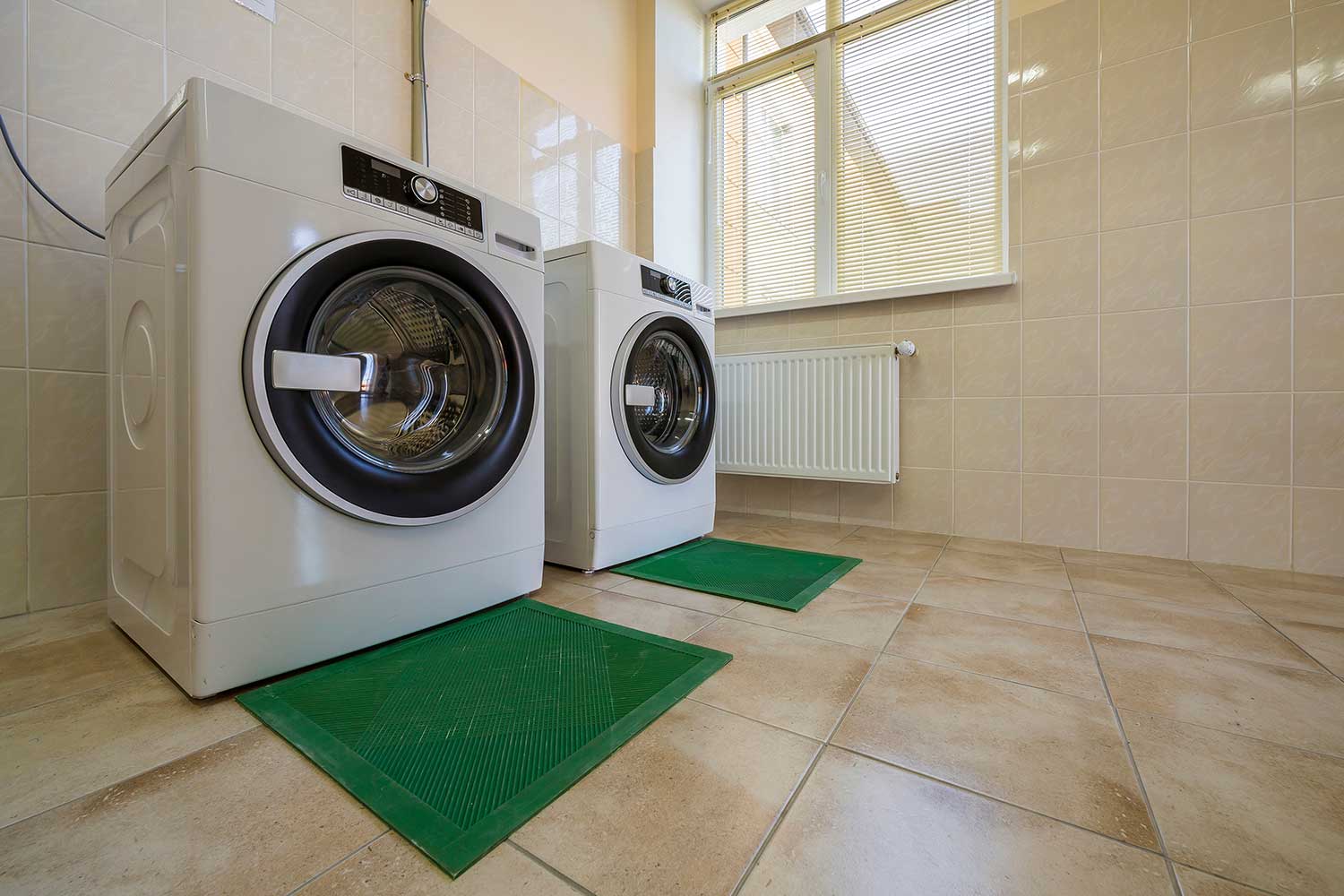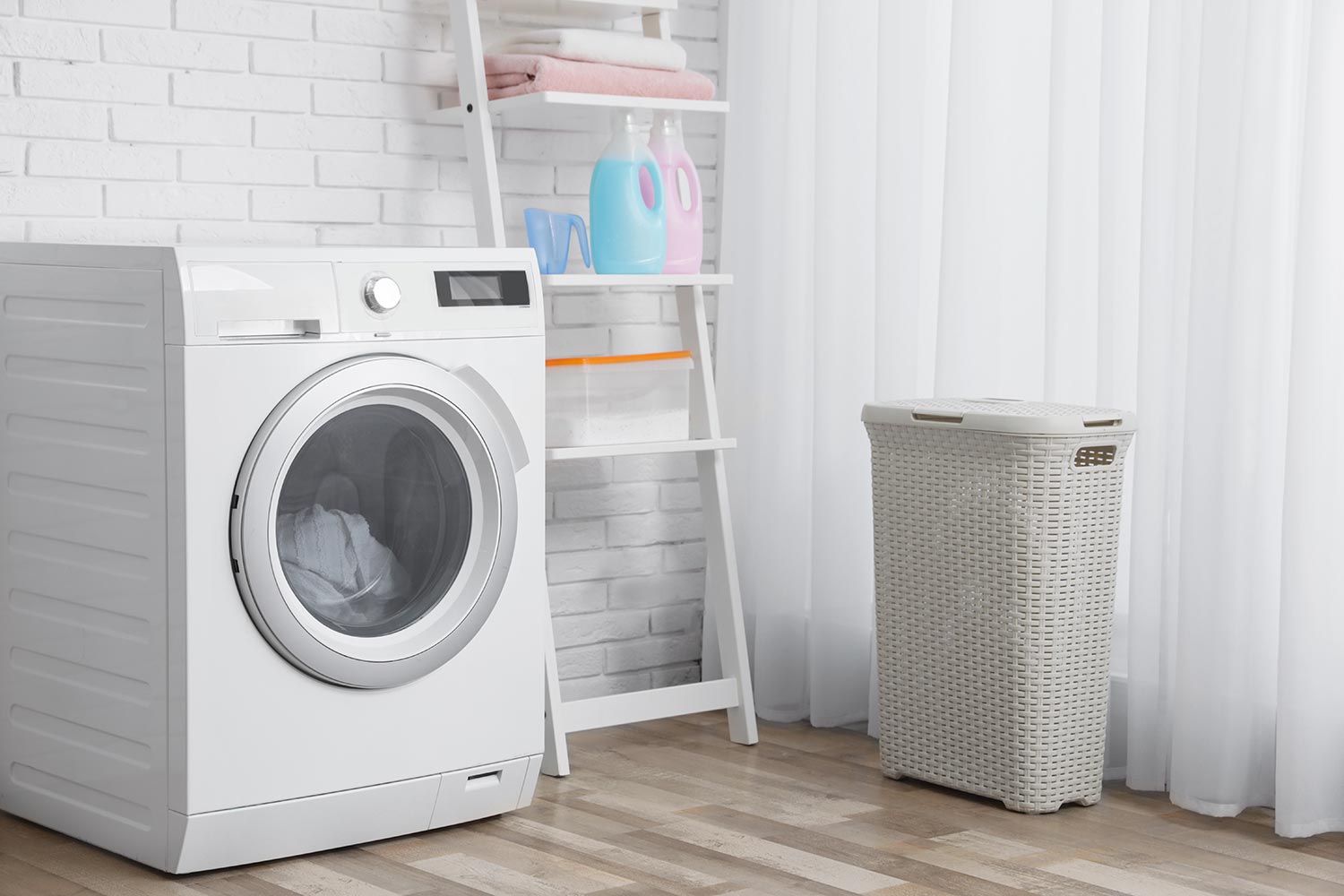Like any uninsulated room, the laundry room can get cold and uncomfortable during the winter. To stop this, you may wonder how to insulate your laundry room. We combine industry professional knowledge and up-to-date research to answer your question in this post thoroughly.
Insulating your laundry room is not significantly different from insulating any other room of your home. Depending on your laundry room's layout, you can use any of the following techniques:
- Fiberglass Batts
- Closed-Cell Spray Foam
- Closed-Cell Foam Board
- Blown-In Insulation
Keep reading the rest of this post for details on when each of the above insulation techniques is appropriate and how to perform them. To conclude, we answer several related questions and provide an additional reading list.

Which Insulation Technique is Right for Your Laundry Room
First of all, from a home comfort perspective, it is only necessary to insulate laundry room surfaces that face the outside. Inside walls need no insulation.
Initially, we will consider if you have exposed joists, rafters, or stud bays. All possible insulation materials are exposed framing bays, fiberglass batts, spray foam, and foam board.
On the other hand, if you have closed cavities such as finished walls or ceilings, you will need to insulate using blown-in fiberglass or cellulose insulation. In the following sub-sections, we cover how to apply each insulation type in your laundry room.
Fiberglass Batts
Fiberglass batts are a popular insulation choice because they are relatively cheap and easy to install. Whenever there is exposed framing, you can buy fiberglass batts to fit both the distance between the framing elements and the depth of the lumber.
Click here for R11 fiberglass batts for 16" stud bays from Amazon.
For instance, if you have 2 x 4 framed walls with studs 16-inches on-center, buy 15-inch R-11 insulation. If you are unclear what fiberglass to buy for your laundry room, take careful measurements and have a service member help you at your local hardware store.
To install, place the fiberglass into the bays to fill the whole space but is uncompressed. If you have irregular bays, such as around windows or near walls, cut the batts to fit. Also, be sure to cut around junction boxes and other obstructions.
If faced, be sure to put the batt facing towards the home's inside. For places where you are worried about the fiberglass batts falling, such as the ceiling or crawl spaces, staple or twine the batts in place.
For the most effect, encapsulate the bays from the inside once the fiberglass batts are installed. Most often, this is done with drywall. The drywall acts as a barrier, which stops air and water movement through the permeable batts.
Watch this video for an excellent example of how to insulate a laundry room wall with fiberglass:
Closed-Cell Spray Foam

Spray foam is also applied in open framing bays. Usually, professional companies bring a truck with specialized equipment to spray the foam insulation. However, you can buy kits that are appropriate for smaller square footage.
Click here for a spray foam kit from Amazon.
Following the directions on the packaging, spray the framing bays. Start on the edges to ensure a solid seal, then fill in the bay's center. The goal is to fill the bay to the thickness of the framing.
The foam will expand once applied, so be cautious to ensure that you do not overfill the bays. Further, be sure to hold in plumbing and electrical so that the expanding foam does not push it out.
Where breathing protection while using spray foam to protect against the off-gassing. The foam takes about 24-hours to cure fully.
One advantage of spray foam is that it acts as a vapor barrier and provides insulation. This means that you do not need to install drywall or another barrier once the foam is installed.
Watch this video to learn how to use spray foam:
Closed-Cell Foam Board
Closed-cell foam boards generally come in large sheets. Using a utility knife, cut them to fit any exposed framing bay you want to insulate. Then, use silicone caulk to glue the pieces of foam board into place. Often, you may have to double-layer the board to fill the available area.
Click here for closed-cell foam board insulation from Amazon.
Once you have insulated all exposed bays in the walls, ceiling, and floors, be sure to caulk or use caulking tape to fill gaps between insulation pieces and between the insulation and the stud bays - this finishes the rest of the vapor barrier created by the closed-cell foam insulation.
Blown-In Insulation

Blowing in insulation, like spray foam, is usually performed by insulation professionals and large truck-mounted blowing equipment. However, you can rent or buy insulation blowers and the loose insulation that these blowers use.
Click here for a two-inch hole saw from Amazon.
First, you want to drill a hole into the outside of your wall that equals the diameter of your hose. Generally, you want the hole near the top of every framing bay. For windows, skylights, and other bay breaks, you will need a hole on each side of the obstruction.
Sometimes, you can remove the siding first and only drill the holes through the sheeting. This makes the repair and repainting work much more simple.
Then, following the included directions, blow insulation into your wall. You will want to feed the hose as far into the cavity as possible and slowly raise it to fill the entire space. Continue this process for all framing bays.
Click here for a silicone caulk from Amazon.
Once done, glue back the holes you cut out with silicone caulk and paint the rounds to match the existing siding.
Does a laundry room need to be insulated?

Old school thinking and practice often left the laundry room uninsulated. However, the modern standard is always to insulate a laundry room. Reasons for this include the fact that laundry rooms have plumbing, which can freeze and are frequently used no matter the temperature.
How do I make my laundry room soundproof?
To make your laundry room soundproof, consider each of the following techniques. Combine several different strategies to help stop sound waves from exiting your laundry room and entering the rest of your living space for the best results.
1. Insulate the Entire Laundry Room
Above, we recommend only insulating the exterior laundry room walls. However, if you want to soundproof your laundry room, insulate the interior walls too. Insulation helps stop the transfer of heat and deadens sound waves.
2. Add A Door Sweep and Weatherstripping
Usually, door sweeps and door weatherstripping are reserved for exterior doors. However, a large quantity of the noise that makes its way from one room to the other comes through cracks around our doors.
Click here for weatherstripping from Amazon.
Therefore, adding a door sweep and weatherstripping to your interior laundry room door should make a big difference in how much sound exits your laundry room.
3. Add a Soundproof Blanket to Door
Click here for a soundproof door blanket from Amazon.
Soundproof blankets are designed to deaded sound. Since the door is the thinnest location between the laundry room and the rest of your house, adding such a blanket to the laundry side of the door frame can go a long way to soundproofing your laundry room.
4. Add Curtains

Sometimes, sound reaches your ears through exterior or interior laundry room windows. Adding curtains to these windows functions helps stop any sound from your laundry appliances before they can reach the thin window glass.
5. Buy a Better Door
Usually, interior doors are hollow and relatively poor at stopping the movement of sound. Therefore, if you want to soundproof your laundry room, consider buying a steel insulated or solid core door. Be sure the new door is the exact dimensions as the old one for a much easier door switch job.
How do you cover exposed pipes in a laundry room?
Exposed pipes can be unsightly and annoying. There are many ways to cover these pipes, from building new shelves and pipe boxes to well-placed laundry items. Further, some homeowners buy or make cloth covers to help hide their laundry room pipes.
Does a dryer need a vent?
Yes, a dryer needs a vent. These vents are critical to moving the hot and wet air from the inside of your dryer to the outside of the home. Almost all building codes have specific requirements for how a dryer vent should function.
What happens if you can't vent your dryer outside?
If you do not have a dryer vent, the hot and wet air from your dryer will blow out the dryer back. This moisture is not immediately a problem but can lead to serious issues over time.
These issues include mold, mildew, home rot, and even fires. According to the Environmental Protection Agency, mold, mildew, and rot occur from the buildup of moisture like that which exits the dryer. Fires are caused when the hot air comes into contact with excessive dryer lint buildup.
Additional Reading
To learn more about laundry room insulation and ventilation, read these great HVACseer articles:
- Does A Laundry Room Need Ventilation? [Complete Dryer Ventilation Guide]
- How To Insulate Around A Dryer Vent
- Can You Wall Mount A Heat Pump Dryer?
In Closing
In this post, we answered the question of how to insulate a laundry room. We cover the main ways to accomplish this task depending on the current state of your laundry room. To conclude, we answer several related questions. Good luck!







